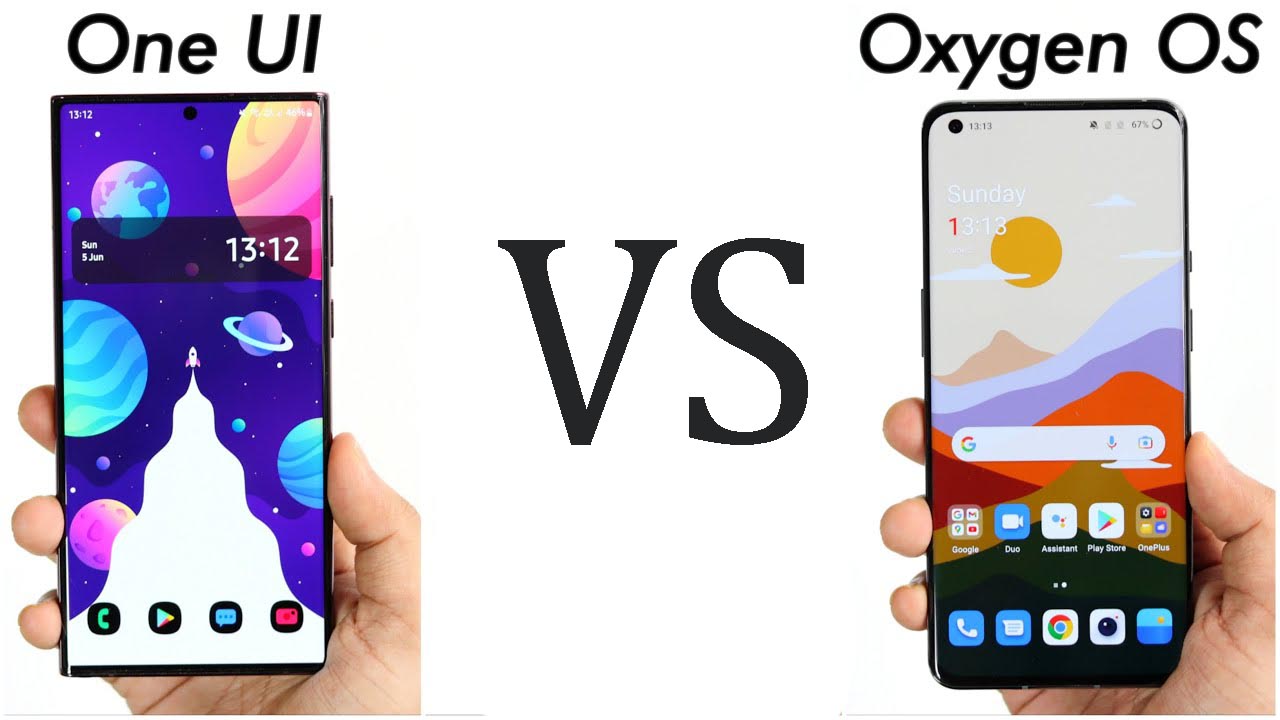Introduction: One UI vs. OxygenOS
In the realm of Android smartphones, customization is king. One of the primary ways manufacturers differentiate their devices is through custom user interfaces (UIs) layered over the stock Android operating system. Two heavyweights in this arena are Samsung’s One UI and OnePlus’s Oxygen OS. Both aim to enhance user experience, streamline interactions, and offer unique features. In this comprehensive comparison, we delve into the intricacies of One UI and Oxygen OS to discern their strengths, weaknesses, and which might be the better fit for different types of users.

User Interface and Design:
One UI, developed by Samsung, emphasizes a clean, intuitive design geared towards one-handed use. Introduced in 2018, One UI brought a significant overhaul to Samsung’s previous TouchWiz interface. It features large headers, card-like app layouts, and thoughtful placement of interactive elements to enhance usability. Samsung also incorporates its own design language, incorporating rounded corners, colorful icons, and subtle animations.
On the other hand, OxygenOS, the brainchild of OnePlus, boasts a near-stock Android experience with a focus on speed and fluidity. The design philosophy centers around minimalism and simplicity, offering users a clutter-free interface. OxygenOS prioritizes speed and responsiveness, with animations designed to be snappy, creating a seamless user experience. It also provides extensive customization options, allowing users to tweak the interface to their preferences without compromising performance.
Customization and Features:
Both One UI and OxygenOS offer an array of customization options to cater to diverse user preferences. One UI provides extensive theming capabilities, allowing users to personalize the look and feel of their device with downloadable themes, icon packs, and font styles. Samsung also integrates features like Edge Panels for quick access to apps and tools, as well as Bixby, its virtual assistant, for voice commands and device control.
OxygenOS, renowned for its “Never Settle” mantra, offers a plethora of customization options without sacrificing performance. Users can tweak the system theme, accent colors, and icon packs to suit their tastes. Additionally, OxygenOS introduces features like Zen Mode, a digital detox tool that temporarily disables non-essential functions to promote mindfulness, and Fnatic Mode for enhanced gaming performance.
Performance and Optimization:
Performance is paramount in both One UI and Oxygen OS, albeit with slightly different approaches. One UI, optimized for Samsung’s hardware, aims to provide a smooth and fluid experience across its range of devices. It leverages features like Adaptive Performance, which optimizes CPU, GPU, and memory usage based on usage patterns to enhance performance and battery life. Samsung also integrates AI-based optimizations to ensure consistent performance over time.
Oxygen OS, known for its lightweight nature, focuses on speed and responsiveness. OnePlus devices are equipped with high-refresh-rate displays, complemented by Oxygen OS’s optimizations for smoother animations and reduced touch latency. Moreover, Oxygen OS incorporates features like RAM Boost, which dynamically allocates additional memory to frequently used apps for snappier multitasking.
Updates and Support:
In terms of software updates and support, both One UI and Oxygen OS strive to provide timely security patches and major Android upgrades. Samsung typically releases new versions of One UI alongside flagship device launches, ensuring that users have access to the latest features and enhancements. However, the rollout of updates may vary depending on the device model and carrier.
Similarly, OnePlus commits to delivering swift updates to its devices, with Oxygen OS updates often arriving shortly after Google releases new Android versions. OnePlus also maintains an active community forum where users can provide feedback, report issues, and suggest features, fostering a sense of community engagement.
Conclusion:
In the battle between One UI and Oxygen OS, there is no clear winner – it ultimately boils down to personal preference and priorities. One UI excels in providing a feature-rich, user-friendly experience with a focus on productivity and customization, making it an ideal choice for Samsung enthusiasts and users seeking a comprehensive suite of tools. Conversely, Oxygen OS offers a near-stock Android experience with unparalleled speed, customization, and community-driven development, catering to users who prioritize performance and flexibility. Whether you prefer the polished refinement of One UI or the raw power of Oxygen OS, both interfaces offer compelling experiences that elevate the Android user experience to new heights.